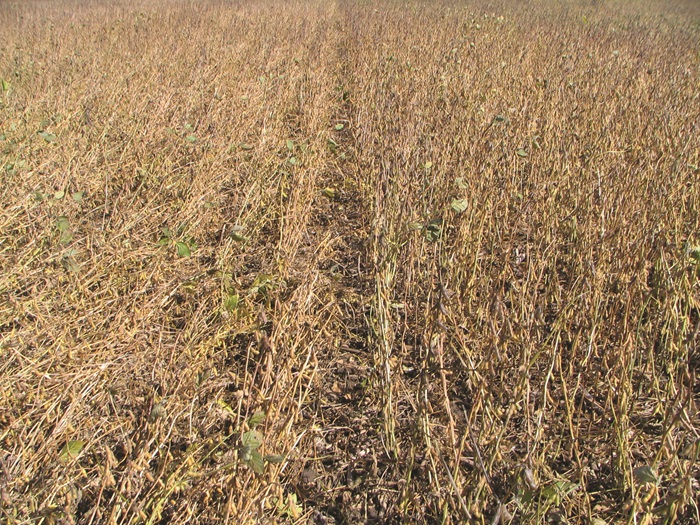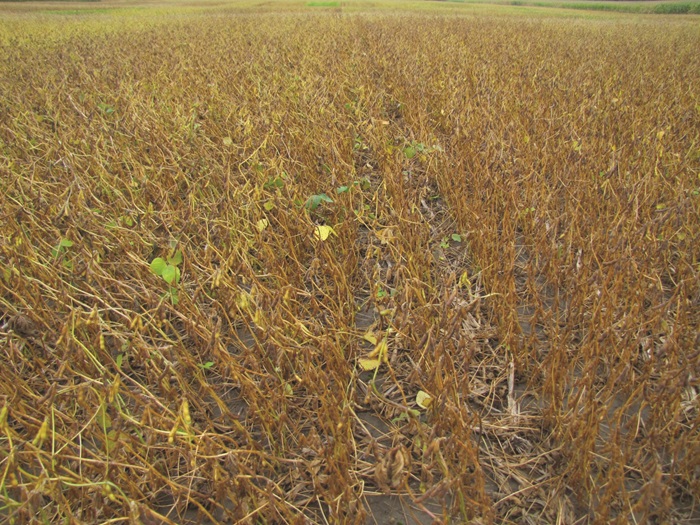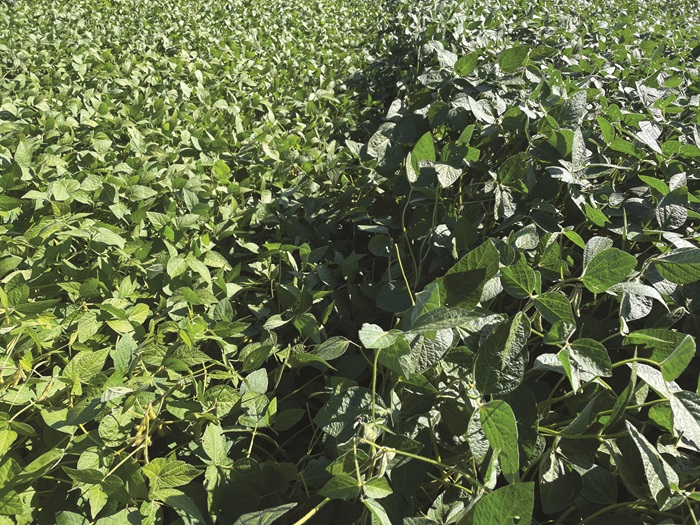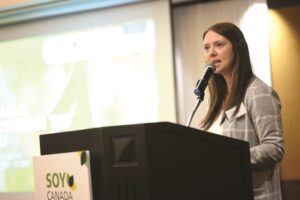Soybean lodging
AGRONOMIC INFORMATION FROM ONTARIO'S CROP SPECIALISTS

SOYBEAN LODGING WILL SIGNIFICANTLY REDUCE YIELDS. Lodging impedes light penetration into the canopy during key growth stages, reducing a plant’s ability to produce seed. Lodging that occurs from R3 (beginning pod) to R5 (beginning seed) is the most detrimental. Lodging that occurs at later stages is largely a harvest problem. Diseases also proliferate in lodged plants, further reducing yield. White mould thrives in lodged, wet canopies. Lodging often occurs in the most productive areas of a field where high fertility and moist conditions are present, making conditions even more favourable for disease.
WHAT CAUSES SOYBEAN LODGING?
High plant populations for the given environment result in competition for light, causing stem elongation which weakens the stem. The exact number of plants per acre that will cause lodging depends on soil type, variety, and growing conditions. For instance, heavy clay soils where beans are physically shorter can sustain higher populations than loamy soils. In Image 1, 250 000 seeds/acre were enough to cause severe lodging on loam soil compared to 200 000 seeds/acre where there was no lodging. It’s also worth noting that under extremely low populations, lodging occurs as each plant carries an excessive number of pods.
Poor soil fertility, especially soil lacking in potassium, results in poor stalk strength which can increase lodging (Image 2). Low potassium levels are associated with poor stalk strength in grass crops, but it’s also true in legumes. Soybean fields that are deficient in potassium are more susceptible to lodging.
Excessive nitrogen fertility application will greatly increase lodging in a wet year. Although soybeans respond well to reasonable amounts of manure, excessive nitrogen will cause lodging.
HOW TO MINIMIZE LODGING
In some growing seasons, lodging is almost inevitable, but careful management will reduce losses in susceptible fields. Lodging scores are taken in the performance trials and reported at GoCrops.ca. These scores and plant height information should be used when picking varieties. Choosing a physically short variety with good lodging scores can essentially solve the issue in fields with a history of lodging (Image 3).
Early seeding will also reduce lodging because it results in shorter plants compared to seeding in the second half of May or early June. Early planting means cooler conditions during the vegetative stages, which reduces the length between nodes, shortening plants. A good variety, adequate potassium, and reduced seeding rates in areas prone to lodging to no more than 150,000 plants per acre will all work together to reduce the likelihood of lodging in soybeans greatly. •

Image 1. High seeding rates can result in lodging. On the left, a high seeding rate of 250,000 seeds/ acre. On the right, a population of 200,000 seeds/ acre has no lodging.

Image 2. Plants are lodged on the left side of the picture, where no potash fertilizer was applied to this low-testing field. On the right side of the picture, 100 lbs/acre of 0-0-60 was applied.

Image 3. The variety on the left side of the picture has completely lodged, while the variety on the right with a higher lodging score remains standing. Both were seeded on the same day at the same seeding rate and fertility program.


























